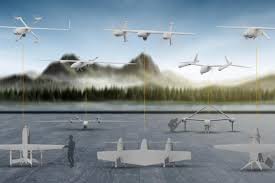
Breaking News
 The War On Iran – Summing Up The First Round
The War On Iran – Summing Up The First Round
 Why 'The Shawshank Redemption' is the best movie about investing ever made
Why 'The Shawshank Redemption' is the best movie about investing ever made
 App-y Travels: Private Aviation Has Finally Embraced Smartphone Chartering
App-y Travels: Private Aviation Has Finally Embraced Smartphone Chartering
 The portable mosquito air defense system.
The portable mosquito air defense system.
Top Tech News
 xAI Grok 3.5 Renamed Grok 4 and Has Specialized Coding Model
xAI Grok 3.5 Renamed Grok 4 and Has Specialized Coding Model
 AI goes full HAL: Blackmail, espionage, and murder to avoid shutdown
AI goes full HAL: Blackmail, espionage, and murder to avoid shutdown
 BREAKING UPDATE Neuralink and Optimus
BREAKING UPDATE Neuralink and Optimus
 1900 Scientists Say 'Climate Change Not Caused By CO2' – The Real Environment Movement...
1900 Scientists Say 'Climate Change Not Caused By CO2' – The Real Environment Movement...
 New molecule could create stamp-sized drives with 100x more storage
New molecule could create stamp-sized drives with 100x more storage
 DARPA fast tracks flight tests for new military drones
DARPA fast tracks flight tests for new military drones
 ChatGPT May Be Eroding Critical Thinking Skills, According to a New MIT Study
ChatGPT May Be Eroding Critical Thinking Skills, According to a New MIT Study
 How China Won the Thorium Nuclear Energy Race
How China Won the Thorium Nuclear Energy Race
 Sunlight-Powered Catalyst Supercharges Green Hydrogen Production by 800%
Sunlight-Powered Catalyst Supercharges Green Hydrogen Production by 800%
DARPA fast tracks flight tests for new military drones

With recent conflicts demonstrating how inexpensive drones are quickly revolutionizing warfare, DARPA is seeking ways to get ahead of the technological curve as fast as possible. To that end, it is shaping the second phase of its AdvaNced airCraft Infrastructure-Less Launch And RecoverY (ANCILLARY) program by prioritizing rapid prototyping and accelerated flight testing of Group 3 drones (weighing 330 lb or 150 kg). The focus is on addressing problems as they emerge through testing, rather than aiming for perfection on the first flight.
To push forward the maiden flights from 2026 to this year, DARPA is focusing on autonomous systems and payloads while putting off specific requirements regarding maximum physical dimensions and autonomous takeoff/landing capabilities in high sea states.
One way of speeding things up is to rely heavily on Sikorsky's MATRIX technology, which was developed as part of DARPA's Aircrew Labor In-Cockpit Automation System (ALIAS) program. Able to be fitted to both fixed wing and rotary aircraft, this autonomous flight system is able to handle flight control and navigation for an entire mission from take off to landing. This is especially important during long transit flights because it greatly reduces the workload of the remote human pilot overseeing the drone.
In addition, each of the five prototypes will use the Naval Surface Warfare Center Dahlgren Division's payload management software Battle Management System (BMS) that will allow the drones to share information immediately with individual troops as needed. Also, each prototype will have varied designs, but all will be required to have a minimum flight endurance of 12 hours, a range of 100 nautical miles (115 miles, 185 km) and handle a 60-lb (27-kg) payload.
"We're taking a full 360 look at what it takes – considering performance, cost, usability, interoperability, certification, manufacturing, etc. – to ensure we rapidly deliver a game-changing capability," said DARPA Program Manager Phillip Smith. "We've got five outstanding American companies we expect to be ready to accept and deliver orders at scale within the upcoming budget year.
"ANCILLARY fills a critical gap, bringing operational capabilities comparable to much larger – Group 4 and 5 – drones to smaller units, such as Army, Marine Corps, special operations units or a ship's company. These drones can be deployed without additional infrastructure or equipment, even in austere environments – offering a game-changing toolset for warfighters."

 He 3D Printed a Whole House
He 3D Printed a Whole House

